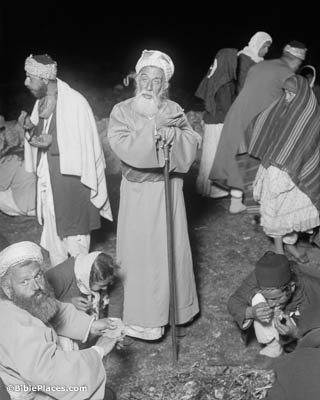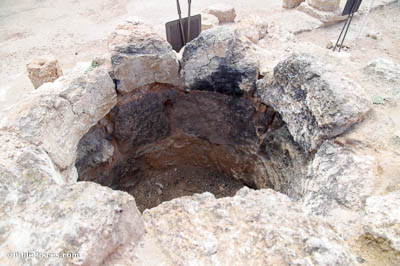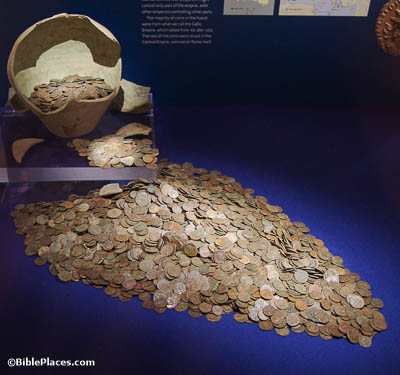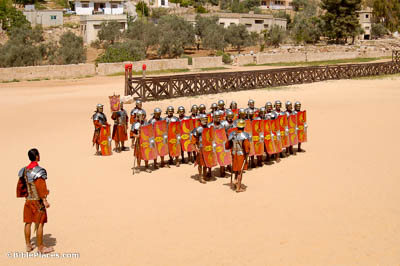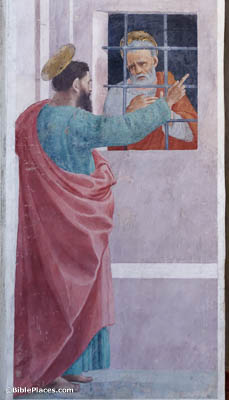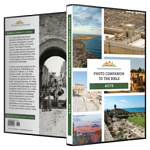The high priest Ananias came down with some elders (Acts 24:1).
It is thought that Ananias ben Nedebeus officiated as high priest in Jerusalem from about AD 47 to 59, although there is not consensus on these dates. The events recorded in this verse took place in about AD 57. He was one of the very last high priests, since the Jewish people have not had a functioning priesthood since the destruction of Jerusalem in AD 70. The Samaritan high priest shown here, photographed between 1900 and 1920, is perhaps the nearest recent parallel.
